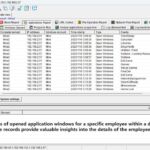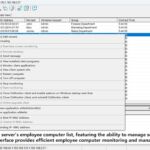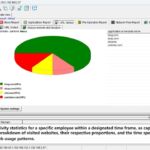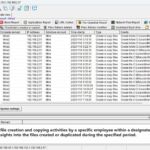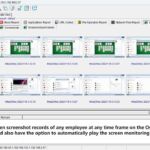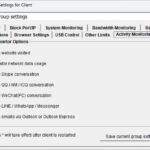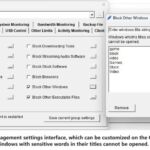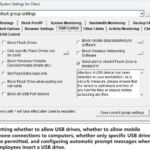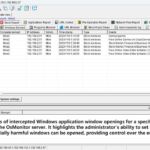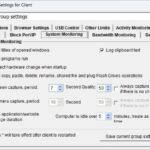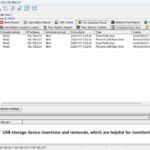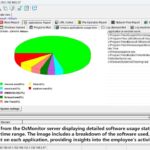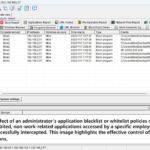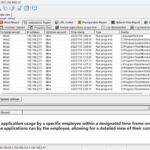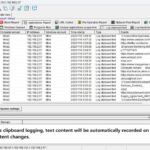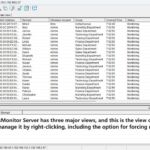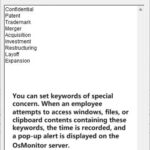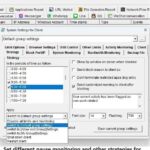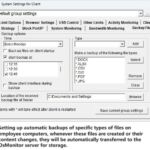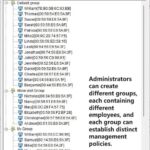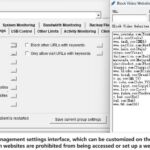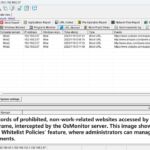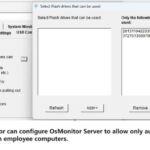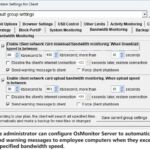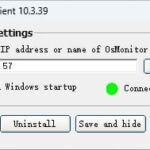Image stitching algorithms have a wide range of advantages and application scenarios in computer screen monitoring software. This algorithm can merge multiple image segments into a single entity, providing a larger monitoring field of view and more comprehensive information.
The image stitching algorithm offers the following advantages in computer screen monitoring software:
- Expanded Monitoring Field of View: The limited size of computer screens restricts the display range of a single monitoring frame. However, in certain monitoring scenarios, it is necessary to simultaneously monitor a larger area, such as large conference halls, warehouses, parking lots, etc. By using image stitching algorithms, multiple camera views can be stitched together, expanding the monitoring field of view. This allows monitoring personnel to observe the target area more comprehensively, preventing them from missing critical information due to screen limitations.
- Improved Monitoring Resolution: In some monitoring scenarios, higher image resolution is required to observe target details more clearly. However, a single camera may not provide sufficient resolution. Image stitching algorithms can merge images from multiple cameras, enhancing the resolution of the monitoring area. This results in clearer monitoring footage, helping monitoring personnel to accurately identify target features, such as facial details or license plate numbers.
- Real-Time Panoramic Monitoring: In places that require panoramic monitoring, like large squares, public transportation hubs, etc., using a single camera may not cover the entire area effectively. Image stitching algorithms can merge multiple camera views, providing real-time panoramic monitoring. This allows monitoring personnel to simultaneously observe a wide area, ensuring there are no blind spots and enhancing the comprehensiveness and utility of the monitoring system.
Image stitching algorithms can be applied in various scenarios within computer screen monitoring software, including but not limited to:
- Security Surveillance: In the field of security surveillance, image stitching algorithms are commonly used in large shopping malls, airports, banks, public transportation stations, etc. By stitching together multiple camera views, a comprehensive and high-resolution monitoring system can be achieved, enhancing the efficiency of the surveillance system. For instance, in large shopping centers, image stitching algorithms enable monitoring personnel to simultaneously view multiple areas, identify suspicious behaviors, and ensure public safety.
- Production Monitoring: In industrial settings such as factories and workshops, image stitching algorithms can merge camera views to achieve comprehensive monitoring of production lines. Monitoring personnel can observe the entire production process in real-time, monitor equipment performance, and promptly identify potential issues to improve production efficiency and quality.
- City Surveillance: Image stitching algorithms are widely applied in city surveillance. For example, at busy intersections, merging camera views from multiple traffic monitoring cameras allows real-time traffic condition monitoring, traffic flow regulation, and reduction of congestion and accidents.
- Education and Training: In large classrooms or training venues, image stitching algorithms can merge camera views to help teachers or trainers monitor students or participants comprehensively. Such monitoring systems can provide better teaching and training effectiveness, enabling teachers to better understand students' reactions and comprehension, and offer personalized guidance and support.
In summary, image stitching algorithms offer numerous advantages in computer screen monitoring software and find broad applications in security, production, city management, education, and various other fields. By expanding the monitoring field of view, improving resolution, and achieving real-time panoramic monitoring, image stitching algorithms enhance the efficiency of monitoring systems, providing monitoring personnel with comprehensive and accurate monitoring services, thereby strengthening the overall security and reliability of the monitoring system.
About OsMonitor:
The mission of OsMonitor is to create a Windows computer system tailored for work purposes, effectively regulating employee computer behavior. It enables employers to understand what employees are doing each day, monitoring every action, including screen activity and internet usage. Additionally, it restricts employees from engaging in specific activities such as online shopping, gaming, and the use of USB drives.
OsMonitor, designed purely as software, is remarkably user-friendly and requires no additional hardware modifications. A single management machine can oversee all employee computers. As a leading brand in employee computer monitoring software with over a decade of successful operation, OsMonitor has rapidly captured the global market with its minimal file size and excellent cost-effectiveness compared to similar software. At this moment, thousands of business computers worldwide are running OsMonitor daily.




